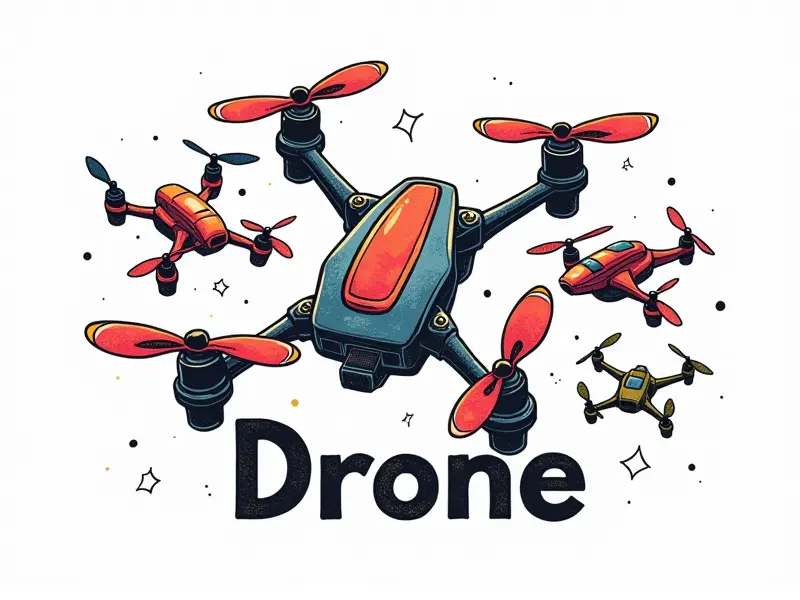Can drones carry passengers?

Will We Soon Ride in Drones?
The concept of riding in drones has long been a staple of science fiction, but recent advancements in technology are bringing this futuristic vision closer to reality. As drone technology continues to evolve at an unprecedented pace, the question arises: will we soon be able to ride in drones? The answer is more promising than ever before.
Are Passenger-Carrying Drones Possible?
The idea of passenger-carrying drones might seem far-fetched today, but it's not as impossible as one might think. Several companies are already working on prototypes and conducting test flights to explore the feasibility of such vehicles. With advancements in battery technology, aerodynamics, and autonomous navigation systems, the possibility of drones carrying humans is becoming more tangible.
Drone Technology Meets Passenger Needs
To make passenger-carrying drones a reality, several technological challenges need to be addressed. These include ensuring that drones can safely lift and transport human passengers over long distances without compromising on speed or efficiency. Innovations in battery technology are crucial for extending flight time, while advanced aerodynamics will help reduce drag and increase range.
Autonomous Navigation
Another critical aspect is the development of robust autonomous navigation systems that can handle complex urban environments. These systems must be able to navigate through dense traffic, avoid obstacles, and comply with airspace regulations to ensure safe operation.
Can Drones Transport Humans Safely?
Safety is undoubtedly one of the most significant concerns when it comes to transporting humans in drones. Ensuring that these vehicles can operate safely requires rigorous testing and certification processes. Regulatory bodies like the Federal Aviation Administration (FAA) are working on guidelines for drone passenger transport, focusing on areas such as vehicle design, safety standards, and pilot training.
Regulatory Challenges
The regulatory landscape is evolving to accommodate these new technologies. Governments worldwide are developing frameworks that balance innovation with public safety. This includes establishing rules for airspace management, data privacy, and liability issues related to drone accidents or malfunctions.
The Rise of Flying Drone Taxis
Several companies have already begun testing flying taxi services using drones. Companies like Uber Elevate and Volocopter are at the forefront of this revolution, aiming to offer on-demand air transportation that bypasses ground traffic congestion. These initiatives not only promise faster travel times but also address environmental concerns by reducing carbon emissions.
Drones for Human Transportation: Reality Check
While the idea of drone taxis sounds exciting, it's essential to consider practical limitations and challenges. One major hurdle is infrastructure development—building charging stations, maintenance facilities, and regulatory frameworks that support widespread adoption. Moreover, public acceptance plays a crucial role in the success of these services.
Economic Considerations
The economic feasibility of drone taxis also needs to be assessed. High initial investment costs for vehicle development, testing, and infrastructure could initially make such services expensive. However, as technology matures and scales up, operational efficiencies may drive down costs over time.
Are Passenger Drones the Next Big Thing?
The potential benefits of passenger drones are immense—reduced traffic congestion, faster travel times, improved accessibility in remote areas, and a more sustainable mode of transportation. As technology continues to advance and regulatory frameworks mature, it's likely that we will see more widespread adoption of these vehicles.
Environmental Impact
Drones have the potential to significantly reduce carbon emissions compared to traditional ground-based transportation methods. By reducing reliance on fossil fuels and minimizing traffic congestion, passenger drones could play a crucial role in combating climate change and promoting sustainable urban development.
Will We Ride in Drones Soon?
The timeline for widespread adoption of drone taxis remains uncertain but is gradually becoming clearer. Initial deployments are expected to start in select cities with favorable conditions—such as high population density, advanced infrastructure, and supportive regulatory environments. As these services prove successful, they will likely expand to other regions.
Early Adopters
Cities like Dubai and Singapore have already launched pilot programs for drone taxis, demonstrating that the technology is moving from concept to reality faster than anticipated. Early adopters are positioning themselves as leaders in innovation, attracting investment and fostering technological advancement.
Is a Drone Taxi Service Coming?
The arrival of drone taxi services is imminent but will likely follow a phased approach. Initial rollouts may focus on specific routes or use cases before expanding to broader applications. As the technology matures and regulatory frameworks solidify, we can expect more widespread adoption.
Public Acceptance
Gaining public trust and acceptance is crucial for the success of drone taxi services. Transparent communication about safety measures, operational protocols, and benefits will be key in building confidence among potential users.
Can Drones Become Our New Mode of Transport?
The transition to drones as a primary mode of transportation depends on overcoming numerous technical, regulatory, and economic challenges. However, the rapid pace of technological advancement suggests that this transformation is not only possible but increasingly probable in the coming years.
Future Scenarios
Visionary scenarios envision a future where drone taxis seamlessly integrate into urban landscapes, offering efficient and eco-friendly transportation solutions. While we are still some distance from full-scale implementation, the groundwork being laid today sets the stage for transformative changes in how we travel.
Drone Taxis: Reality or Fiction?
The concept of riding in drones has moved from science fiction to reality, with tangible progress being made by innovators and regulatory bodies alike. While challenges remain, the potential benefits make it an exciting area for future developments. As technology continues to evolve and societal acceptance grows, drone taxis are poised to become a viable mode of transportation.
Conclusion
The advent of passenger-carrying drones represents a significant leap forward in urban mobility solutions. While numerous hurdles need to be overcome—from technological advancements to regulatory compliance—progress is being made at an encouraging pace. As the technology matures and public acceptance grows, we are likely to see drone taxis becoming a common sight on our city skylines sooner than many might expect.

